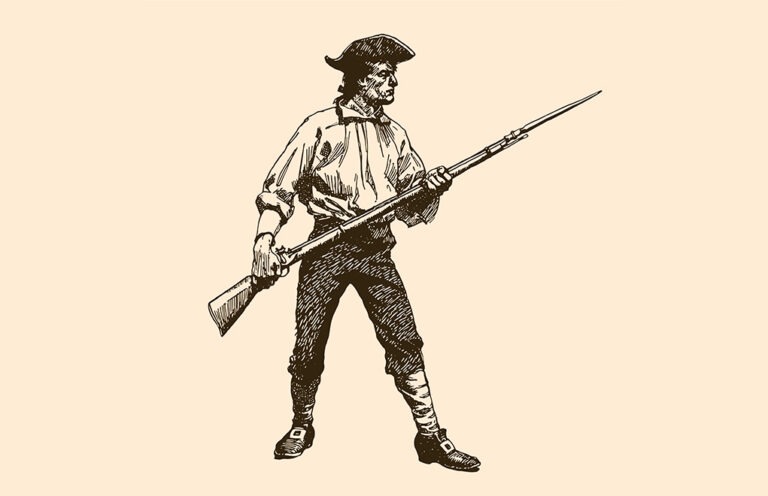
We discuss why ignoring the militia clause endangers the right to keep and bear arms.
When Americans debate the Second Amendment, most of the focus tends to center around the individual right to keep and bear arms. This emphasis, especially in post-Heller and McDonald jurisprudence, is both understandable and historically justified. However, a recurring error—committed even by Second Amendment advocates—is to treat the “militia clause” as a relic or a throwaway preamble. This oversight is more than a mere historical misstep; it’s a strategic blunder that endangers the very right these advocates claim to protect.
As the Tenth Amendment Center has long emphasized, constitutional language should be taken seriously in its entirety. The Second Amendment begins not with “the right of the people …” but with “A well regulated Militia, being necessary to the security of a free State.” This prefatory clause does more than frame the historical context—it outlines purpose, meaning and limits on government power. Ignoring it concedes too much ground to those who seek to reinterpret the Amendment through a modern, statist lens.
The Militia As The Armed Citizenry
Historian and constitutional scholar Stephen Halbrook makes it clear: In the founding era, the term “militia” did not refer to a standing military force or what we now call the National Guard. It referred to the general body of armed citizens—able-bodied males typically aged 16 to 45—who were expected not only to defend their own communities but also to be the first line of resistance against tyranny. This understanding wasn’t unique to America; it was rooted in English common law and the political philosophy of thinkers like John Locke and William Blackstone.
As Halbrook observes, the militia was not a privileged class of government-trained personnel. It was the citizenry itself, armed and responsible for its own liberty. To that end, citizens were expected to bring their own arms. In this sense, the right to bear arms was not merely an individual liberty—it was a civic duty.
Why The Militia Clause Still Matters
The tendency to ignore the militia clause arises largely from the (justifiable) desire to assert the Second Amendment as an individual right. But by doing so, modern advocates often detach that right from its original civic and political function: to deter tyranny and resist centralized military force.
The Founders feared a professional standing army far more than they feared individual violence. They understood that an armed populace, organized as a decentralized militia, was the surest safeguard against domestic oppression. When the militia clause is read out of the Amendment, this structural check on tyranny is lost. As a result, the right to bear arms is interpreted narrowly as a private right rather than a public, constitutional responsibility. This limited view makes the right more vulnerable to incremental erosion through regulation, licensing and judicial reinterpretation.
Historical Evidence: The Militia And Self-Defense
Halbrook’s historical work underscores the absurdity of the claim that the Second Amendment protects only militia service or that it is moot because formal militias no longer exist. In both English and early American law, the right to bear arms was consistently treated as a natural right, especially for self-defense. Even the infamous 1328 Statute of Northampton—which prohibited armed display in a threatening manner—was interpreted as banning only arms borne “malo animo” (with evil intent). As Halbrook explains, “the peaceable bearing of arms was not a crime at the Founding or in the early Republic.”
Moreover, court decisions from the early 19th century reaffirmed that open carry was a constitutional right, while concealed carry could be regulated. The difference hinged not on whether individuals had a right to bear arms, but how they exercised that right.
The Dangers Of Dismissing The Militia
Modern disarmament efforts often hinge on the claim that the Second Amendment is outdated—that it only applies to now-defunct militias, or to the regulation of state-run National Guards. By discarding the militia clause, gun rights advocates play directly into this narrative. If the militia no longer exists, and the right to keep and bear arms was tied to militia service, then it stands to reason—so the argument goes—that the Second Amendment is a historical artifact with no modern relevance.
However, if the militia is understood as the armed citizenry, as it was in the Founders’ time, then the right to bear arms remains as vital today as ever. In an age of mass surveillance, unchecked executive power and militarized law enforcement, the need for decentralized, citizen-based security is not an anachronism—it’s a necessity.
Strategic Consequences For Advocacy
To preserve the Second Amendment, advocates must resist the temptation to sanitize it into a purely individualist doctrine. It is, in fact, both a right and a responsibility. It empowers individuals not merely for private purposes, but to fulfill a public role in the preservation of liberty. This dual nature is not a weakness—it is the source of the Amendment’s enduring strength.
By reclaiming the militia clause, Second Amendment defenders bolster the historical and constitutional legitimacy of the right. They root it not in hobbyist gun culture or political identity, which has its place, but in civic republicanism and the broader structure of federalism and limited government.
Conclusion: A Fuller Reading, A Stronger Right
The Second Amendment is not ambiguous. It recognizes “the right of the people to keep and bear Arms,” and it explains why—because “a well regulated Militia” is “necessary to the security of a free State.” This is not incidental. It is a declaration of political philosophy—a philosophy that views the armed citizen as the guardian of liberty, not the ward of the state.
To ignore the militia clause is to amputate a fundamental rationale that justifies the right. Worse, it surrenders rhetorical and legal territory to those who would regulate the Second Amendment out of existence. If we want to preserve the right to bear arms, we must also preserve the principle of the armed citizen—the true militia—without which freedom cannot stand.
Editor's Note: This article originally appeared in the July 2025 issue of Gun Digest the Magazine.
More On Gun Control And The Second Amendment:
- End Of An Era: The Russian Ammo Ban
- Backdoor Gun Control: The '94 Norinco Ban
- Rare Breed Triggers And ATF Clash Over The FRT-15
- ATF Classifies Pot Scrubbers As NFA Firearms
- Hunting For The True Meaning Of The Second Amendment

Next Step: Get your FREE Printable Target Pack
Enhance your shooting precision with our 62 MOA Targets, perfect for rifles and handguns. Crafted in collaboration with Storm Tactical for accuracy and versatility.
Subscribe to the Gun Digest email newsletter and get your downloadable target pack sent straight to your inbox. Stay updated with the latest firearms info in the industry.

![Best Concealed Carry Guns In 2025 [Field Tested] Wilson Combat EDC X9S 1](https://gundigest.com/wp-content/uploads/Wilson-Combat-EDC-X9S-1-324x160.jpg)


![Best 9mm Carbine: Affordable PCCs [Tested] Ruger Carbine Shooting](https://gundigest.com/wp-content/uploads/Ruger-Carbine-Shooting-100x70.jpg)
![Best AR-15: Top Options Available Today [Field Tested] Harrington and Richardson PSA XM177E2 feature](https://gundigest.com/wp-content/uploads/Harrington-and-Richardson-PSA-XM177E2-feature-100x70.jpg)

Phony guy. Won’t print my comment.
I taught the same concept to 8th grade students during my 17-year teaching career. Well done and thanks!
Many states do have state militias by law besides their National Guard units. Many are inactive or considered “unorganized” militias like here in Michigan. Take a look at article 32.509 of the Michigan Military Act 150 of 1967 which you can find here:
https://www.legislature.mi.gov/(S(frmmk1aztsaw1fbelu3tpb55))/documents/mcl/pdf/mcl-Act-150-of-1967.pdf
Any able bodied citizen residing in Michigan age 17-60 shall be subject to state military duty as provided by this act.
More nationwide info as of 2025:
https://worldpopulationreview.com/state-rankings/state-militias-by-state
Montana Open Carry approves of this article. Share it with those who do not understand the concept. Thank you Alex.